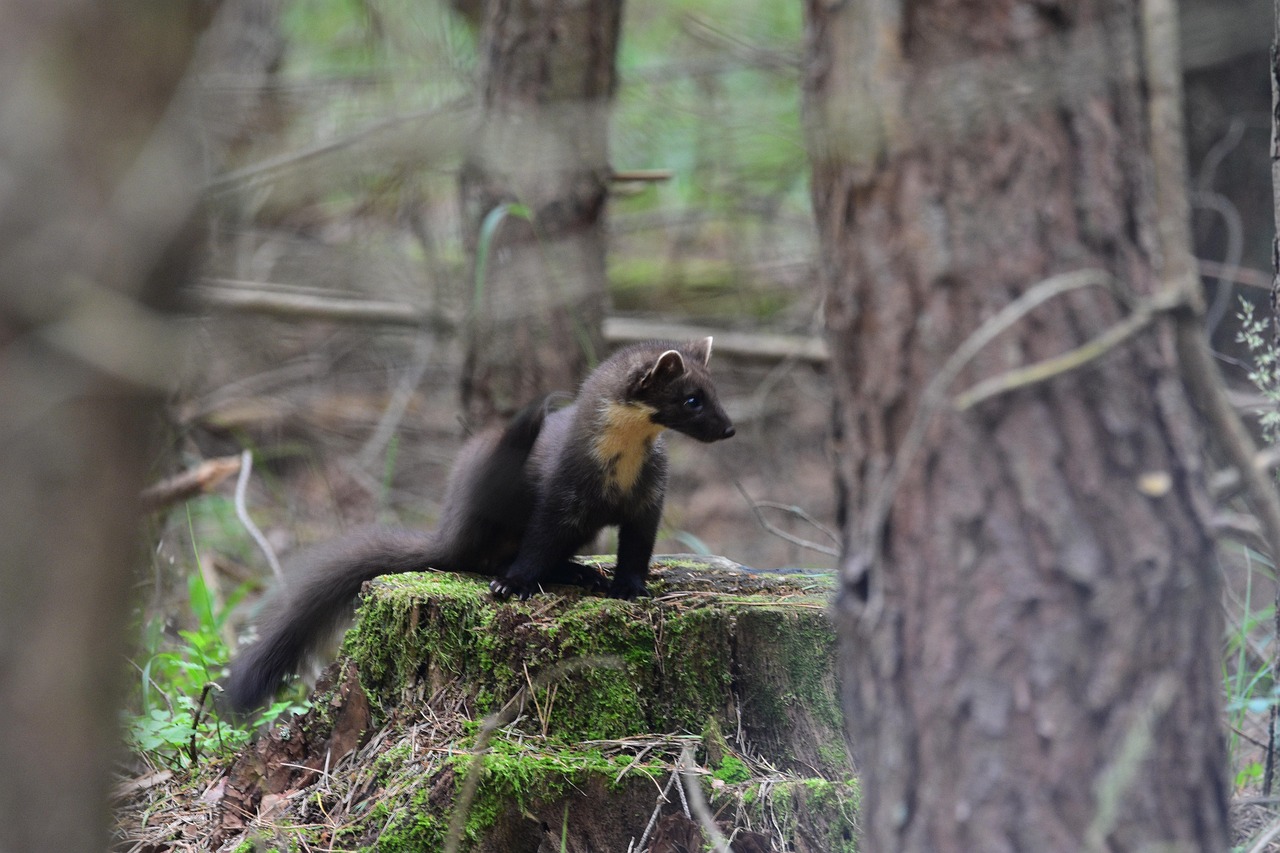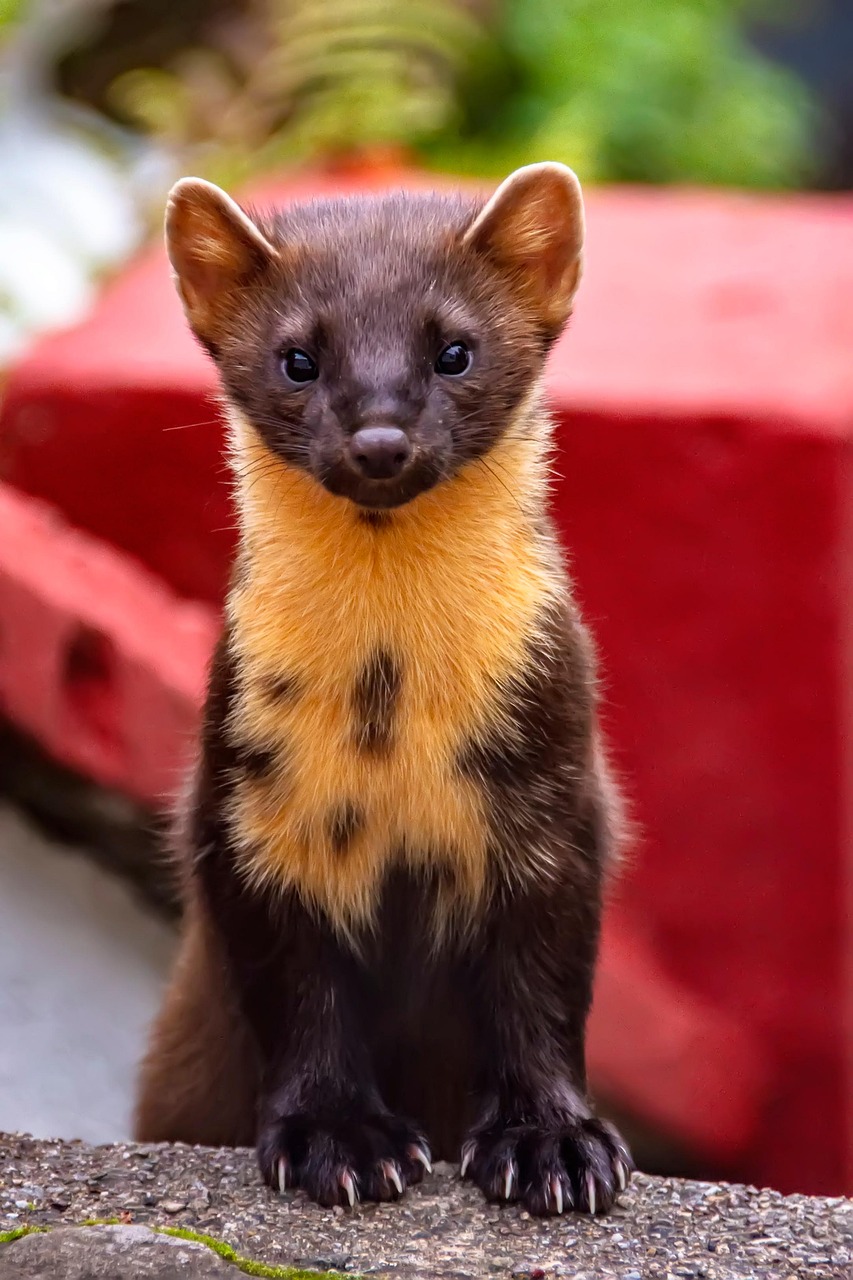Pine Marten (Mård)


Characteristics:
The pine marten is a slender, agile member of the weasel family with a long body, short legs, and a bushy tail. Body length 40–55 cm, tail 20–25 cm, and weight 1–2.5 kg. The fur is dark brown with a distinctive yellow or cream-coloured throat patch. It has a narrow head with a pointed muzzle and large, rounded ears with pale edges. The pine marten has strong claws and is an excellent climber.
Habitat:
Found throughout most of Sweden, except in the far south and on Gotland. It prefers mixed and coniferous forests, especially areas with plenty of trees, rocks, and hollows for shelter and denning.
Behaviour:
The pine marten is solitary and mainly nocturnal. It moves both on the ground and in trees with great agility and speed. It marks its territory with scent and droppings. Typical resting places include old squirrel nests, hollow trees, or rock piles. In winter, martens may move closer to human settlements in search of food.
Diet:
The pine marten is omnivorous, but feeds mainly on small rodents and squirrels. It also eats birds, eggs, insects, berries, and carrion. In autumn, berries — particularly blueberries and lingonberries — make up an important part of its diet to build fat reserves for winter.
Reproduction:
Mating occurs in summer (June–August), but the species has delayed implantation (diapause). The young are born in March–April, usually 2–5 kits per litter, in a nest inside a tree hollow, rock crevice, or abandoned squirrel nest. The kits become independent by late summer.
Tracks and signs:
- Tracks: Four or five toes, often seen as pairs of prints in snow. Step length 80–120 cm when bounding. Print width about 3–4 cm.
- Droppings (scat): Small, dark, twisted droppings, often placed on stones or logs.
- Den: In hollow trees, rock piles, or old squirrel nests.
- Prey remains: Small mammals or birds, sometimes stored or hung in branches.
Distribution:
The pine marten is widespread across Europe and northern Asia. In Sweden, it is common throughout the mainland except Gotland. The population is stable.
Hunting:
Hunting is permitted from 1 september to 28 February (dates may vary by region). Common methods include:
- Trapping with approved body-grip or box traps
- Baiting or calling in winter
- Stalking and tracking in snow
The pine marten is hunted mainly for its valuable fur and for game management purposes.
Firearm class (Sweden):
Hunting pine marten is allowed with class 1-4 rifles or shotguns (common pellet sizes no. 5–7).
Think for the hunting exam:
- Recognised by dark brown fur and yellow throat patch.
- Agile climber living in forest habitats.
- Feeds mainly on rodents and squirrels.
- Tracks: small paired prints, bounding pattern in snow.
- Hunted with class 1-4 rifle, shotgun, or traps.
- Important fur-bearing game species in Sweden.
